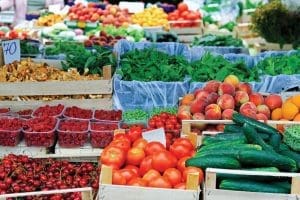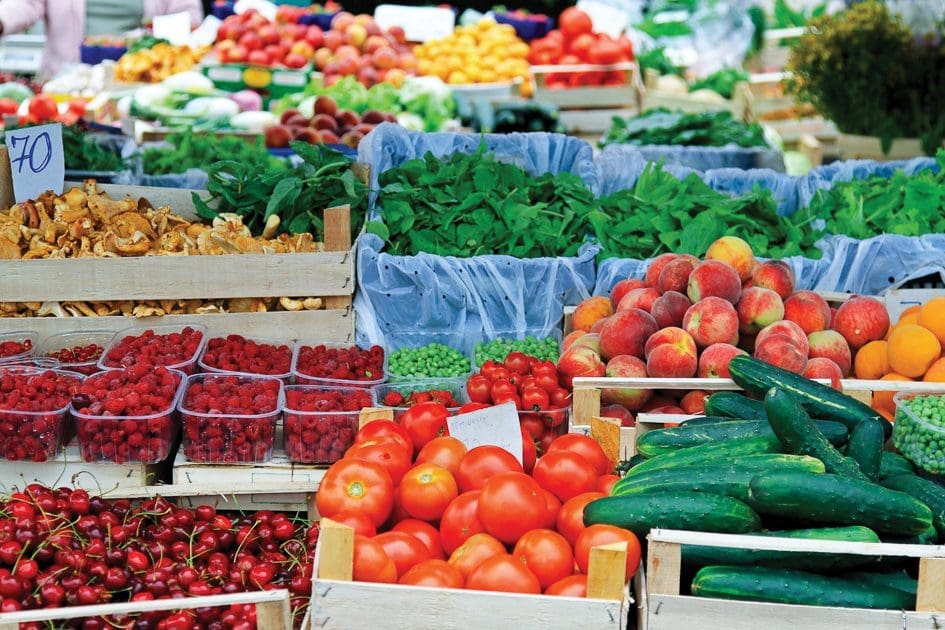By Blaine Davis Contributing Editor

A few Saturdays ago, accompanied by my wife and our 12-year old grandson, Paxton, I perused Wichita’s Kansas Grown! Farmers Market. In jest, I always tell Paxton we are going to buy a farmer, but he always responds with a somewhat dazed look on his face. In actuality, we are supporting a vast array of farmers as defined by the U.S. Department of Agriculture (USDA). As per their Dec. 1, 2022, press release, “A farm is any place from which $1,000 or more of agricultural products were produced and sold during a year.”
Yet a little early for a majority of the freshly harvested produce, these “farmers” still had much to see, feel, pinch, smell and subsequently purchase. Intermixed among the vendors were several peddling beef, pork, homemade bratwursts and fowl – from chicken to emu – with claims of grass fed, antibiotics free, no preservatives, free range and all natural. While I don’t gravitate to these claims and find the basis of this as just plain confusing, I did spot a purveyor of fine cuts to whole sides of Angus beef from Gypsum Hills of Barber County, Kan., with a different and to-the-point message, “home-raised, grass-grown, corn-finished beef.” Being that our small family farm raises nearly 100,000 bushels of corn each year earmarked (no pun intended) for livestock feed, I commended the vendor on their marketing message and consequently thanked her for their support, however large or small, to the overall corn complex.
As confusing as the many health-conscious terms that are bandied about on their meat products, so are those related to marketing of same and other agricultural commodities. There are terms, such as basis – the difference between the current cash price and the futures price of the same commodity – contracts, hedges and options. With options, there are call options, in-the-money options, out-of-the money options, put options and, simply stated, an option. With all these options, I might think I was specifying a new vehicle complete with an over-the-top stereo system and custom alloy wheels. Then, there are the terms long and short, with no semblance to the length of one’s haircut or the shoes on their feet. Having dipped my toes into the water of marketing our family farm’s yearly corn crop, I sifted through all this terminology to understand enough to limit my trading to forward (cash) contracts, agreeing to sell my corn in a certain volume on a certain delivery date for a contracted price. Ideally, this agreed price would be higher at the delivery date than that of the current cash price and, in most years, success has prevailed.
Continuing with my marketing lessons, there are those of hedges, not those bordering my front lawn, but that of locking in the price of a commodity to be bought or sold. Sitting on the board of a farmers’ self-help gas utility pipeline, my lessons have been in real hedge positions for the purchase of natural gas for crop irrigation. With the volatility of energy prices from our nation’s domestic and foreign policies or lack thereof, to that of exporting liquidfied natural gas in behemoth ocean-going tankers, we take hedge positions on this lifeblood throughout the irrigation season of April through September.
In the past few drought years, this has been a godsend with significant savings to my bottom line. In the past two months, my rain gauge has recorded 20 or so inches; consequently, the center pivots have been idle, bringing a smile to my face and most of the neighbors’ faces, but another marketing lesson has arisen. Since we throughout the pipeline system hedged 53,000 MMBtu for use in June and will only use 10,000, we are responsible for physical commitment hedge loss. The hedge price being approximately $3.30 and the spot, cash market price will be around $1.90/MMBtu, this may equate to $60,000 loss. Having lived in western Kansas for six decades, I know hotter, drier days are coming, which might allow us to roll the under collection into the remaining months of the irrigation season. Some may think this could be an expensive lesson in marketing, but trust me, it is a better problem than that of the past couple of arid crop seasons.
Emptying another 1.25 inches from the rain gauge, I ponder my next marketing decision for my 2023 corn crop. If the season continues through harvest, it should be another banner year, but after last year’s prices being at a 10-year high, I foresee lower cash prices. Looking at the larger picture, U.S. agriculture trade is forecasted to be down from 2022’s positive balance of $2.4 billion to 2023’s negative balance of $17 billion, mainly driven by horticultural, livestock, dairy and poultry product imports. Added to these numbers, corn exports being 30 percent less than last year, corn acres planted topping last year, size of U.S. beef cow herds lowest since 2014, feeder cattle numbers in decline and, subsequently, feedlot numbers could fall from 3 to 4 percent to possibly 7 to 8 percent, what is my next move? Ethanol production has remained stable and corn supplies are down 6 percent, I do see some support for the market.
Considering all these factors to marketing, it seems as confusing as my grandson and me thumping our fingers to select the perfect watermelon from the array at a farmer’s market.
Fortunately, I have had a good track record, but with today’s uncertainty, time will tell.







